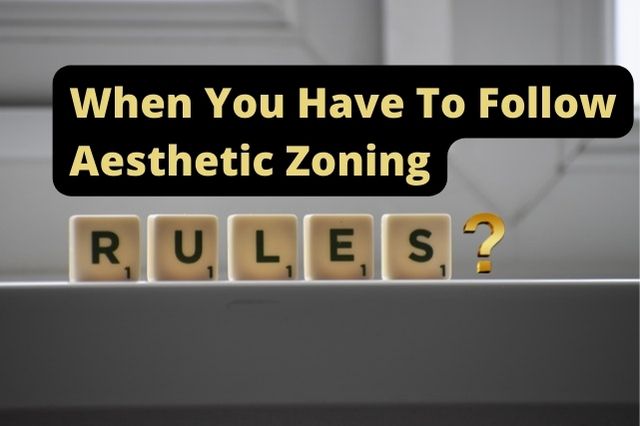
What is Aesthetic Zoning?
Aesthetic zoning is the most important issue of modern-day media because it decides what is good and what is bad, what people buy and what they don’t. The most successful businesses in the world have been those that we’re able to create a brand image in their target audiences’ minds.
They had to make sure that when their clients thought of their product, they would immediately think of certain words. For instance, Nike has created a very successful brand image.
If you want to create a great aesthetic in your interior, then you should know the rules of aesthetic zoning. The basic idea of this concept is to make a harmonious and visually appealing room. The main rule of this concept is that all elements of the room should be balanced and matched with each other.
Here is the full guide of Aesthetic zoning, that you should know about.
What is Aesthetic Zoning?
Aesthetic zoning is a method used by municipalities to control the appearance of properties. It can be part of a comprehensive zoning ordinance or it can be a standalone law. It originated as an amendment to conventional zoning to deal with specific aesthetics, such as noise and building height, that are not otherwise regulated.
Zoning ordinances that impose aesthetic standards are common in residential areas, where there is concern about how new construction will impact the overall look of a neighborhood.
There are several reasons for such regulations, but in the majority of cases, it is to promote the aesthetic appearance of a neighborhood. There are several categories of aesthetic zoning ordinances.
Aesthetic Zoning Rules/Limits
As a homeowner, you may have the desire to paint your house in a certain color. You may even want to paint your house a certain color because it will increase your home’s value or because you simply like that color. However, the city or community where you live may restrict homeowners from painting their house’s specific colors.
Though aesthetic zoning rules for a community may limit the colors that homeowners may paint their houses, there are several ways that homeowners can bend these rules.
Aesthetic zoning rules for a community give local governments the power to limit home colors based on perceived impacts on neighboring properties and communities.

When You Have To Follow Aesthetic Zoning Rules
First, look at the location of your business. Is it in a residential area? If so, you need to follow aesthetic zoning rules.
If your business is in a commercial area, you have some more freedom to use your building’s exterior, but there are still certain design regulations that you need to follow.
The city will usually have a set of official rules for sign placement and other exterior aesthetic features. Make sure you check with the city before making any alterations to your commercial property. This is especially important if the property is historic or unique in some way, as the city may have an additional advantage.
Conclusion
So, we hope this will help you to understand Aesthetic Zoning. Well, In the past, the government had to be involved in the creation of zoning regulations. However, today, property owners can create and enact their own zoning regulations by using aesthetic zoning.
Aesthetic zoning is a practice that has been around for many years, but it has gained popularity recently thanks to the rise of social media and networks like Facebook.
Aesthetic zoning allows property owners to designate certain areas as no parking or no stopping zones. These zones are not legal zones, so they are not enforced by law, but disobeying them could result in being ostracized by the community.
